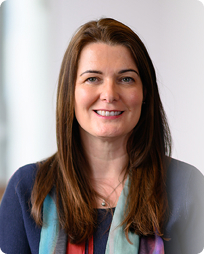Digital Catapult’s first Quantum Technology Access Programme (QTAP) raised awareness, educated end users, and fostered industry partnerships to drive the future adoption and commercialisation of quantum computing. During this first-of-a-kind programme, quantum experts from Digital Catapult and the programme partners ORCA Computing and Riverlane supported participants to explore novel quantum computing use cases.
Optimising energy production with Frazer-Nash

Can quantum computing help minimise the cost of energy production
Frazer-Nash delivers global innovative engineering and technology solutions. Its use case was provided by the National Grid Electricity Supply Operator (ESO).
The future electricity grid will include thousands of distributed renewable energy sources, with challenges including the size and complexity of the grid, and the unpredictable dynamics of multiple interconnected components. The computational challenges include real-time simulation, scenario planning and optimisation.
What was done?
Frazer-Nash wanted to minimise the cost of energy production, subject to constraints. This is the same use case that DNV – another QTAP participant – investigated and is known as the “Unit Commitment Problem”, a series of mathematical problems to find a low cost operational schedule for power generators. For the experiment, this problem was formulated as a combinatorial optimisation problem, where binary variables represented different combinations of energy sources that could be switched on, or off, at different time periods. In addition, for each time period, the cost of production was optimised subject to constraints including enough energy being produced in each period and limits on generator behaviour. A penalty term was added to the cost if the solution did not meet a constraint. The ORCA PT-1 quantum boson sampler (quantum computer) produced binary strings mapped to the relevant binary variables and the boson beam splitter angles were tuned classically to find the binary string which corresponded to the lowest cost.
After successfully tackling a problem with a small number of time slots and five generation units, and checking that simulations found the optimal solution, the Frazer-Nash team moved on to much larger problems. Here it was discovered that although naïve approaches struggled to find solutions that obeyed the constraints, a procedural embedding method developed during QTAP was able to overcome this challenge. Further insight was gained by running a scaled down problem on a prototype of the ORCA PT-1 quantum computer.
What was learnt?
The Frazer-Nash participants already had a good understanding of gate-based quantum computing. During the programme they gained a better understanding of using a boson sampler as well as learning from the use cases of the other participants.

I found with ORCA’s SDK you can push further from small problems to much bigger computations. This is valuable because we’re interested in how these quantum computers perform when we scale up. For me the key message is it matters how you encode your problem on quantum computers to get the best results.
Clive Emary Consultant at Frazer Nash
Watch the highlights video from the showcase
Get involved
Be the first to receive news and updates about our work with quantum. Fill out your details in the form below.
Related topics

Quantum Technology Programme
Separating opportunity from hype to understand industry challenges that may be best solved by quantum computing.
Leading businesses showcase the potential for quantum computers to transform energy, infrastructure and engineering
Leading businesses on Digital Catapult’s Quantum Technology Access Programme (QTAP) showcase the potential for quantum computers to transform energy, infrastructure…
Digital Catapult launches Quantum Technology Access Programme with eleven leading British businesses, to improve the quantum readiness of key UK industries
Digital Catapult announces eleven leading British businesses have been accepted onto a first-of-its-kind Quantum Technology Access Programme, to overcome industrial…














































